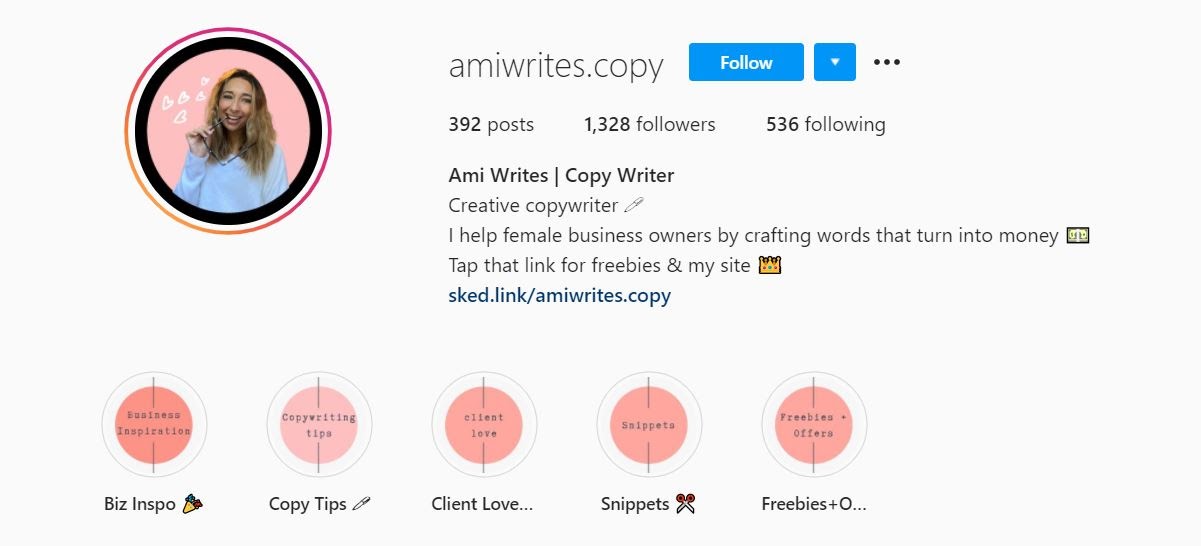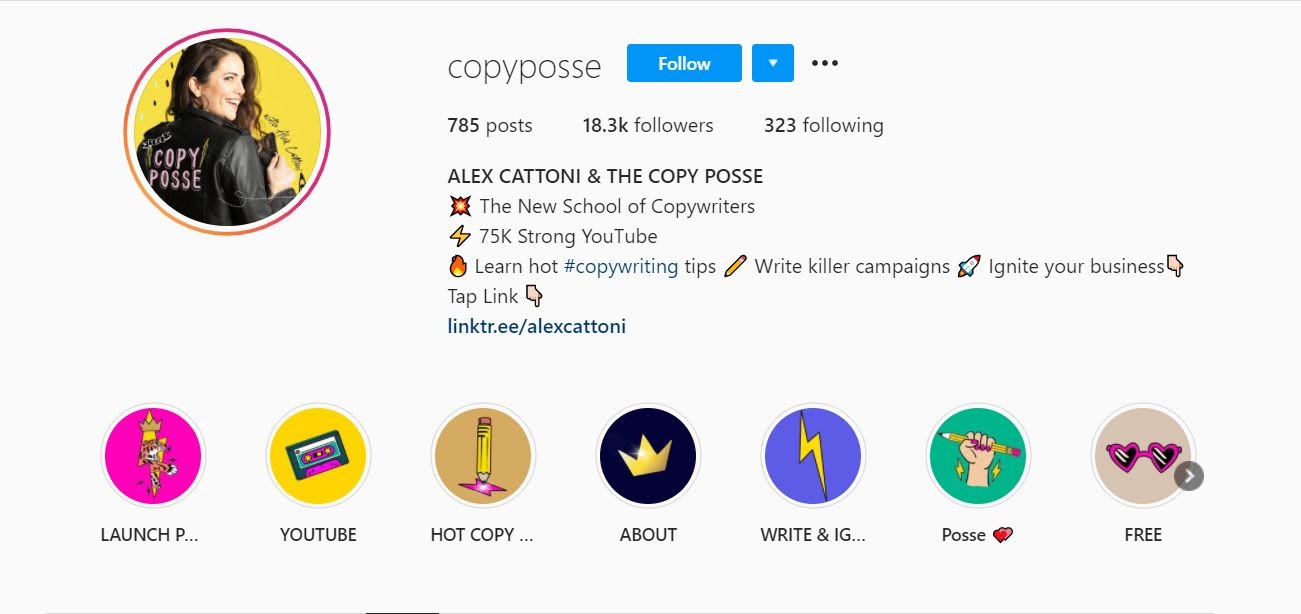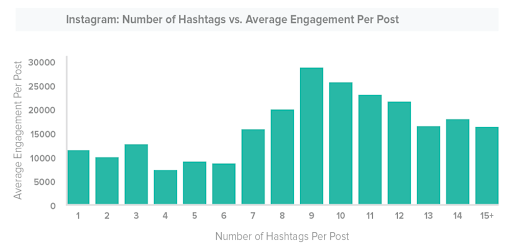Instagram may not seem like the most obvious choice for writers, but then where’s the fun in choosing the obvious? Look beyond the glitz of filters and stickers, and the photo-centric social media platform has a lot to offer. According to the 2020 Statshot Report, Instagram saw some of the strongest user base growth among social platforms last year — and adult users accounted for a significant portion. 60% of users log in at least once day, browsing around for an average of 28 minutes.
Looking closer, it’s easy to see that Instagram holds plenty of opportunity. Publications, editors, commercial brands, and nonprofits abound on Instagram — any of these could be a potential client. A recent Payoneer survey showed a significant increase in freelancers using Instagram for business. So how do you get started?
There are two general approaches to finding freelance writing work on Instagram. The first is, broadly speaking, letting work find you. This involves optimizing your profile, deciding what sort of content to post, and then refining it to suit that purpose. The second is going out and finding work: networking through hashtags, DMs and comment marketing.
Optimize Your Profile
Regardless of how you plan to look for work on Instagram, optimizing your profile is a must. Any potential client hoping to learn more about you will go to your profile first. Your profile should both inspire confidence and provide information. Here’s one great example:

The principles of profile optimization are the same for freelancers of all sorts. Choose a presentable, distinctive profile picture and write a clear description of what it is you do. Ami Writes takes this a step further by including her target market: female business owners. A link manager or landing page editor can help make the most of the single link you’re allowed in your bio. Finally, make use of story archives to pin further info to your profile, such as client testimonials, promos, and evergreen content.
Find Your Angle
No matter how great your profile is, it won’t get you far if there’s nothing attached to it. Instagram is still, first and foremost, a platform for user-generated content — so you’ll need to post great content to help win engagement.
One thing to note before starting: don’t put the focus on your writing services. Instagram users are driven primarily by interests and hobbies, so if you want to gain traction, you’ll need to appeal to those interests. Besides, your goal as a freelance writer isn’t to draw attention to how well you write — it’s to use your skills to make something else look good.
This presents a few options for curating your content. First: if you specialize in writing about very visual subjects — food, fashion, places, etc. — you feature this. (If you’re worried about the image itself, remember that a good photo editing or layout app can go a long way.)
View this post on Instagram
Featuring your work on your feed immediately gives potential clients an idea of what you do. The example above shows good form: the product is mentioned in the first few words, placed within a hook that anyone who’s wanted cake for breakfast can relate to. Openings like this are especially important on Instagram, where roughly tweet-length copy performs best. (Save the hashtags for the end of the caption.)
If the work you specialize in is less visual in nature, don’t despair. Pictures with a personal touch are popular on Instagram, too. Snapshots of your day-to-day life — even if heavily “filtered” for social media — are a good way to fill your gallery. Make sure to use your captions well: highlight your interests, the causes you care about and, trite as it may sound, your personal brand.
View this post on Instagram
Not all writers are fascinated with libraries and bookstores, but there are enough of them that the picture above is likely to get some welcome attention for a freelance editor. Which brings us to our next point…
Networking
As a social media platform, Instagram offers many opportunities to expand your network. By hopping on hashtags or sliding into DMs, you can find clients, collaborators, or people who might refer you to further leads.
Hashtags are an easy starting point, since you can use them right from the get-go. Still, taking time to research well-performing, relevant hashtags will help you get a lot more value out of them. You can start by using the hashtags from brands or publications you hope to work with, from interest groups that you’re keen on, or from fellow copywriters. When you use a hashtag that others are already familiar with — like #copywriters in the example below — you get to draw on all the momentum that tag’s already built up.

Of course, you can’t just throw more hashtags into your caption to draw more attention. Using too many hashtags may result in a “shadow ban”: having the algorithm omit your posts from the search results for certain hashtags. A good benchmark for how many hashtags to use, based on recent data, is between five and ten.

If you’re using direct messages (DMs), there are just two things to keep in mind. First, be direct and respectful when you actually send a message. But before that, be sure to choose your targets well. Target individual (but professional) accounts, rather than brand pages; when you do, go over their work to make sure your pitch is something relevant and, preferably, new.
Comment Marketing
This method is all about promoting yourself and your services by providing meaningful replies to other people’s posts. The great advantage of comment marketing is that it responds directly to questions and concerns other people have already identified — which in turn attract people with the same issues.
The best posts to comment are those made by reputable accounts, which are explicitly encouraging interaction (e.g. looking for opinions, recommendations or answers). Your responses should be substantial enough to set the poster on the right track, but leave enough unsaid to get them interested in seeking you out.
An invitation for them to find you as [username] on a given platform, or simply to check out your “link in bio” is a good way to close a comment. Keep in mind, though, that interests come first on Instagram — make sure your answers stay focused on the issue at hand, even when you’re trying to promote yourself.
As interacting with customers on social media becomes increasingly important for businesses, demonstrating a knack for it just might be your ticket to more freelance work.
Don’t Force It (Too Much)
Success on Instagram relies a lot on affecting a kind of semi-authenticity. No one expects you to actually be yourself, but they do at least expect a certain degree of sincerity — seeing at least one side of you that’s more or less close to reality.
If you can’t think of some way to do that while looking for freelance writing work on Instagram, then give it some time. Take a look around the platform. Find some accounts that genuinely interest you and see if you can learn from them — on Instagram, after all, there’s no shame in taking a little inspiration.


